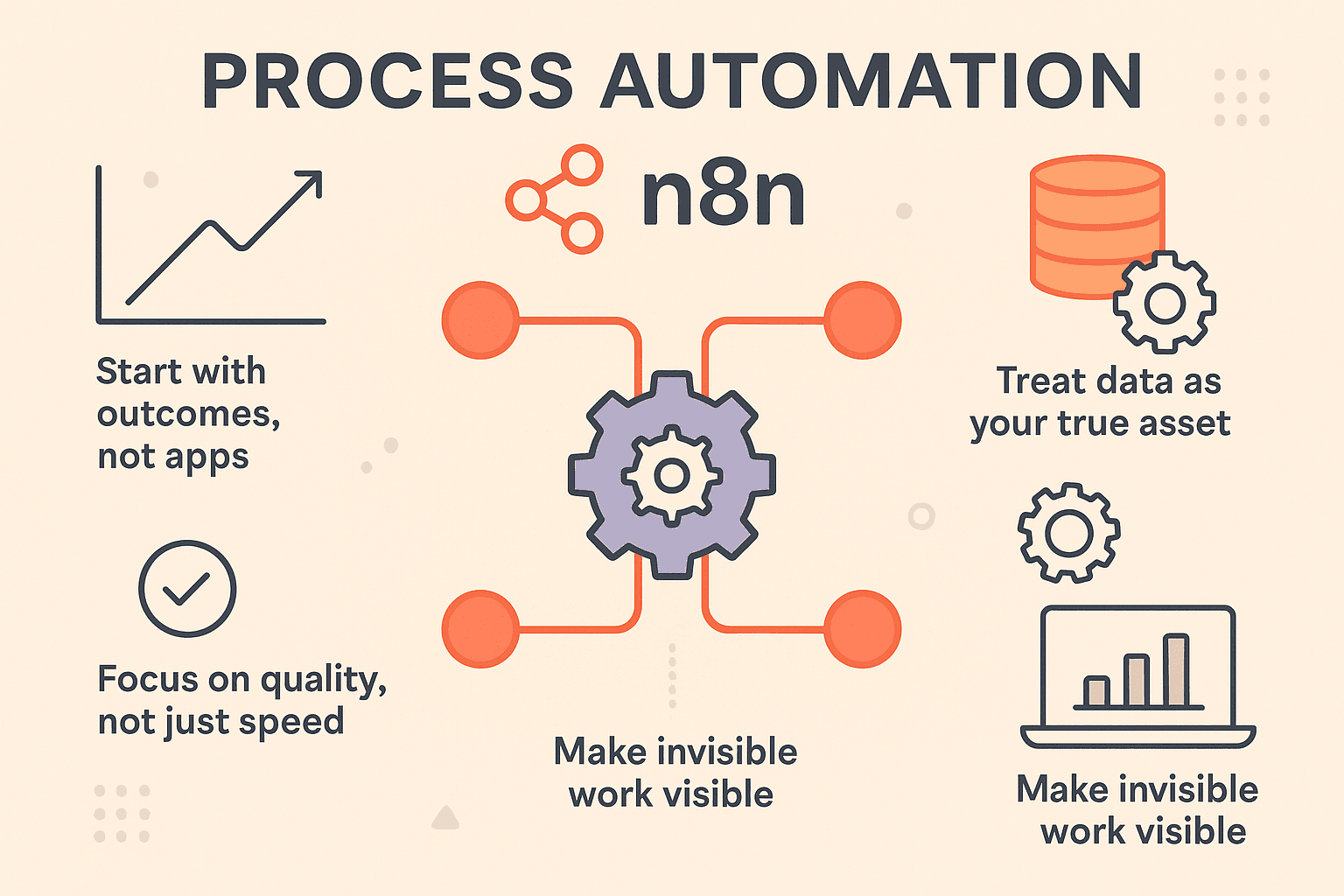5 Key Learnings From Automating With n8n
Discover how shifting from tool-first to outcome-first thinking transformed my workflow with n8n — and how you can apply these five lessons.

🇬🇧 5 Key Learnings From Automating With n8n
Like many, I began automating with small wins: sorting emails, updating my calendar, moving files around. Fun, yes — but honestly, there are plenty of cheap SaaS tools that can do that.
The real breakthrough came when I stopped connecting tools just for the sake of it and started asking: “What outcome am I really aiming for?” That shift — from tool-first to outcome-first thinking — completely changed how I work. And n8n, with its open-source flexibility, turned out to be the perfect engine for this shift.
1. Start With the Outcome, Not the App
Don’t start with "I want to connect Tool A to Tool B." Instead, ask: “What result do I want to deliver?”
In my sales process, that meant ensuring a smooth transition from research → proposal → follow-up. Once the path was clear, the tools fell into place. With that clarity, automation became about consistency, not complexity.
Pro tip: Think like a designer — begin with the end-user experience.
2. Data Matters More Than Tools
Early on, I was chasing integrations. But tools change — your data is what stays.
With n8n, I mapped the data lifecycle: where it's created (CRM, inbox, forms), where it belongs (databases), and how it moves. The result: a stable architecture where the tools can change without breaking the flow.
3. Balance Strict Rules and Creative Freedom
Not everything should be automated.
- Auto-generating proposal IDs? ✅ Yes.
- Writing the tone of the proposal? ✍️ Human.
This is “human-in-the-loop” automation — automation provides the structure, but people bring the nuance.
4. Automation Improves Quality, Not Just Efficiency
Surprise: automation didn’t just save time — it raised quality.
Formalizing steps in n8n reduced errors, missed fields, and messy data. Everything is now logged, scheduled, and verified — boosting both consistency and client satisfaction.
5. Make Invisible Work Visible
I had no idea how much hidden effort filled my day — copy-pasting, retyping, redundant clicks. By documenting everything in n8n, I exposed these blind spots. Even before automation, visibility itself was transformative.
These five lessons changed the way I work with automation:
- Start with outcomes, not apps.
- Data is the true asset.
- Blend automation with human input.
- Focus on quality, not just speed.
- Surface invisible work.
Automation isn’t about connecting tools. It’s a mindset. And n8n lets you design workflows that move the needle.
Want help rethinking your processes? Let’s connect.
References
- Agarwal, D. (2025). Failed automation projects? It’s not the tools — it’s the data. Nanonets Blog
- Doglio, F. (2024). What is human in the loop automation?. Camunda Blog
- Jan. (2021). Re: How to self-host n8n. n8n Community
- Microsoft 365 Team. (2020). How to boost productivity with process mapping. Microsoft Insights
- Redwood Software. (2024). What is workflow automation?. Redwood Blog